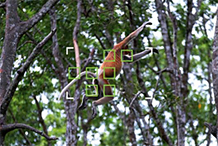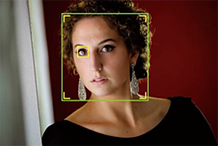Firmware Friday makes Sony A6000, A7-series faster; Big updates from Samsung, Fuji, Sigma and Tamron
posted Friday, June 26, 2015 at 1:00 PM EST

After a brief hiatus last week, Firmware Friday returns today with big news from Fujifilm, Samsung, Sigma, Sony, and Tamron. It's quite a list of updates that we have for you today, so without any further ado, let's get to it!
Sony A7, A7R, A7S and A6000
We'll start with Sony, whose new firmware for the Alpha A7, A7R, A7S and A6000 earns it the award for most updates from a single manufacturer this time around. In all four cases, the most exciting news is a claimed 30% increase in startup speed, reducing the time you'll have to wait until your camera is ready to shoot when an unexpected photo opportunity arrives. That's huge news in our book, because it greatly increases the likelihood of you getting the shot!
The new firmware for the Sony A6000 alone also enables high bit-rate shooting Full HD video capture in XAVC S format, with a choice of 24, 30 or 60 frames-per-second capture in NTSC mode, or 25 / 50 fps capture in PAL mode. That change will allow videographers using the A6000 to trade off card space to reduce the occurrence of unsightly compression artifacts. You'll need to use a Class 10 or faster SDXC card to shoot in XAVC S format, however.
You can get Sony's updates at the links below:
Samsung NX500
Moving on, we have an even bigger update for the Samsung NX500 compact system camera. Available immediately, Samsung NX500 firmware version 1.10 weighs in at a 270MB download, and brings changes aplenty for your camera. Autofocus in particular should be much more capable, with the company promising better performance under difficult lighting. A new Zone AF function has also been added, face detection should work better, and you can opt for more autofocus point sizes. Movie capture has also seen a raft of changes, with a new high-quality 70Mbps Pro movie mode key among them. In all, the list of changes is as below, courtesy of Samsung:
Still Photo Enhancements:
-
Improvements to the overall Auto Focus:
-
Enhanced AF performance in low light condition
-
Enhanced AF performance in backlit and spot light
-
Enhanced AF performance in the corners when utilizing 16-50mm PZ lens
-
Enhanced Face Detection AF performance
-
Enhanced AF performance in movie mode
-
-
Added “Zone AF” mode
-
Increased the size of AF to 5 steps in AF “Area Size”
-
Increased the Face Detection Area of the sensor
-
Includes 4 most popular Pro Suggest presets (Cinematic, Memories, Gorgeous night, & High Speed)
-
Added “Selfie as Flipped” mode
-
The image is flipped to capture as in the preview.
-
-
Improved “Selfie” AF function in Timer mode
-
Continuous AF is default in “Selfie Timer.”
-
-
Simplified EXIF data preview
Video Recording Enhancements:
-
Added "Pro" mode in movie quality and increased the bit rates for movie size and quality (up to 70Mbps)
-
** Movie Recording Time changed to 25 minutes at FHD 60P/50P
-
-
Larger sensor read out data size with improved FHD quality up to 60P
-
Remains in Stand By mode after recording
-
“1280x720 (120P)” setting in the Movie Size Menu for easy access
-
Sound recording is available
-
-
Capture individual 4K frame forward & backward with precision
-
Embedded EXIF data in jpeg
-
-
Added NEW MF Responsiveness mode
-
(Capable of setting to Low, Medium, High focus angle in manual focus mode)
-
You can download the Samsung NX500 firmware version 1.10 update here.
Fujifilm X-T1 (update coming on Monday)
Lastly on the camera firmware front, we have the Fujifilm X-T1 version 4.00 firmware update. This we actually first told you about back in mid-May, when the company announced development of the update was underway. At the time, the update was promised to arrive in late June, and now with a definitive release date of June 29, 2015 -- that's this coming Monday -- we can see that Fuji has met its predicted timeline.
So what's new in the Fuji X-T1 version 4.00 update? Well, the list of changes hasn't been altered since our earlier news item, but we'll repeat it here to save you clicking thru to the earlier story to read them:
-
New AF System
-
New AF system with Zone and Wide/Tracking modes for effortless capture of moving subjects
The AF System complements the fast and accurate 49-single-point autofocus system with new Zone and Wide/Tracking modes, which use 77 autofocus points across a wider area to substantially improve the camera's ability to capture moving subjects.-

The Zone mode allows users to choose a 3x3, 5x3 or 5x5 zone from the 77-point AF area. When combined with the AF-C continuous focusing mode, the camera continues tracking a subject at the center of the selected zone. The 3x3 and 5x3 zones at the center, in particular, offer extra-fast focusing with the use of the built-in phase detection pixels.
-
In the Wide/Tracking mode, the camera displays the area in focus, identified automatically out of the 77-point AF area (Wide in the AF-S mode) and tracks the focus area's subject across the entire 77-point AF area (Tracking in the AF-C mode). This makes it possible to maintain focus on a subject that moves vertically, horizontally, and back and forth.
-
-
Improvement of AF accuracy
Single-point AF divides the focus area into smaller sections to more accurately determine the distance to the subject for even greater focusing accuracy. The built-in phase detection pixels have the detection range of 0.5EV, an improvement from the previous 2.5EV, delivering phase detection AF performance that enables fast focusing in low-light conditions and on low-contrast subjects. -

Eye Detection AF
The firmware update provides Fujifilm's Eye Detection AF, which automatically detects and focuses on human eyes. The function allows you to easily focus on the eyes even in difficult conditions, e.g. when shooting a portrait wide open to obtain a beautiful bokeh background. -
Auto Macro mode
The firmware update introduces the Auto Macro function, which automatically switches the camera into the Macro mode while maintaining the conventional AF speed. You no longer have to press the Macro button to initiate a close-up shot. This update eliminates the Macro function assigned to the Macro Button, allowing you to assign a different function to the button. -
AF improvement in the Movie mode
The optimized algorithm delivers a more natural and smooth AF action during movie recording.
-
-
Other improvements
-
Improved Shutter Speed Dial operation
When the Shutter Speed Dial is set to T and the Shutter Type to Mechanical + Electronic, you can use the command dial to set a full range of exposure times from 30-1/32000sec. Previously, this was limited to 30-2 seconds. This means you can change the shutter speeds across a broader range without having to change camera position. This is particularly useful when shooting in the portrait orientation with the Vertical Battery Grip VG-XT1 attached. -
Exposure Compensation control in Manual.
You can use the Exposure Compensation dial to make exposure adjustments while shooting in the Manual exposure mode with the ISO Auto setting. -
Finer lines on the framing grid enhances visibility
The lines on the framing grid, which you can choose to display in the Screen Set-Up menu, have been made finer making it easier to view the subject. -
Name of Silent mode changed to avoid confusion
The Silent Mode has been renamed to “SOUND & FLASH OFF”.
-
As mentioned, the update actually ships on Monday, June 29, so you can't download it quite yet. However, once it's available, this is the location where you'll be able to access it.
Sigma and Tamron lenses
And with the camera firmware news out of the way, all that remains is to take a quick look at some third-party lens updates from both Sigma and Tamron, as well as some new software from Sigma. In both cases, the companies are addressing the same issue: A problem with autofocus in live view mode with the Canon EOS 5DS and EOS 5DSR DSLRs. The issue, it seems, is much the same as that seen previously with the launch of Canon's EOS Rebel T6s and T6i DSLRs, and for most affected lenses, you'll need to return the optic to its maker for a firmware update. (One model, the Sigma 120-300mm F2.8 DG OS HSM Sport, will however be able to be updated by users if you own the optional Sigma USB Dock.)
You can see Tamron USA's service update notice describing the issue here. Sigma USA has not yet made a statement, but if you speak Japanese, you can read the parent company's statement here. In all, the list of affected lenses is as follows:
Sigma:
-
Current models
-
17-50mm F2.8 EX DC OS HSM, serial numbers above No. 12651501
-
18-250mm F3.5-6.3 DC MACRO OS HSM, serial numbers above No. 13044001
-
APO 70-200mm F2.8 EX DG OS HSM, serial numbers above No. 12713001
-
APO 50-500mm F4.5-6.3 DG OS HSM, serial numbers above No. 12902001
-
120-300mm F2.8 DG OS HSM | Sports, serial numbers between 50064494 and 50347793
-
APO 150-500mm F5-6.3 DG OS HSM, serial numbers above No. 12669751
-
-
Prior models
-
17-70mm F2.8-4 DC MACRO OS HSM, serial numbers above No. 12665001
-
18-200mm F3.5-6.3ⅡDC OS HSM, serial numbers above No. 12851001
-
18-250mm F3.5-6.3 DC OS HSM, serial numbers above No. 12656101
-
APO 50-150mmF2.8 EX DC OS HSM, serial numbers above No. 12839001
-
APO 120-300mm F2.8 EX DG OS HSM, serial numbers above No. 12676440
-
APO 120-400mm F4.5-5.6 DG OS HSM, serial numbers above No. 12971601
-
Tamron
-
SP 15-30mm F/2.8 Di VC USD (Model A012), serial numbers below No. 004500
-
SP 70-200mm F/2.8 Di VC USD (Model A009), serial numbers below No. 032832
-
SP 150-600mm F/5-6.3 Di VC USD (Model A011), serial numbers below No. 054212
-
SP 90mm F/2.8 Di MACRO 1:1 VC USD(Model F004), serial numbers below No. 032395
-
28-300mm F/3.5-6.3 Di VC PZD (Model A010), serial numbers below No. 110053
-
16-300mm F/3.5-6.3 Di II VC PZD MACRO (Model B016), serial numbers below No. 061381

Both companies note that lenses outside the serial number ranges above have already been updated, and that if your lens was already updated to resolve the issue on the Rebel T6i / T6s, it should also work fine with the EOS 5DS and 5DSR. Sigma is adding a white mark to the packaging of updated lenses, as shown at right. Tamron notes that lenses manufactured from May 2015 onwards have already been updated, but hasn't described any method to ascertain this from the packaging.
Sigma Photo Pro software
And finally, we come to the sole software update. Sigma's Photo Pro app, used with the dp Quattro, SD and DP / DP Merrill-series cameras, now stands at version 6.3.0. Changes made in the new release for Windows and Macintosh are as follows:
-
Improved image quality of RAW data (X3F file) of the SIGMA dp Quattro series.
-
Improved long exposure photography for images taken by the SIGMA dp Quattro series.
-
Added the Quick Check Mode to the Main Window (this feature is not available for RAW data taken with SD9 and SD10 cameras).
-
Added the Specifying Folder function to the “Computer” pane in the Main Window.
-
Corrected the phenomenon that it occasionally develops corrupted image data when the X3 Fill Light function is used.
-
Corrected the phenomenon that the brightness level cannot set at 2 or lower if the RAW data is taken with the SIGMA SD1, Merrill series, and dp Quattro series.
You can download Sigma Photo Pro version 6.3.0 here.
(Camera parts image courtesy of Kelly Hofer / Flickr; used under a Creative Commons CC-BY-2.0 license. Image has been modified from the original.)